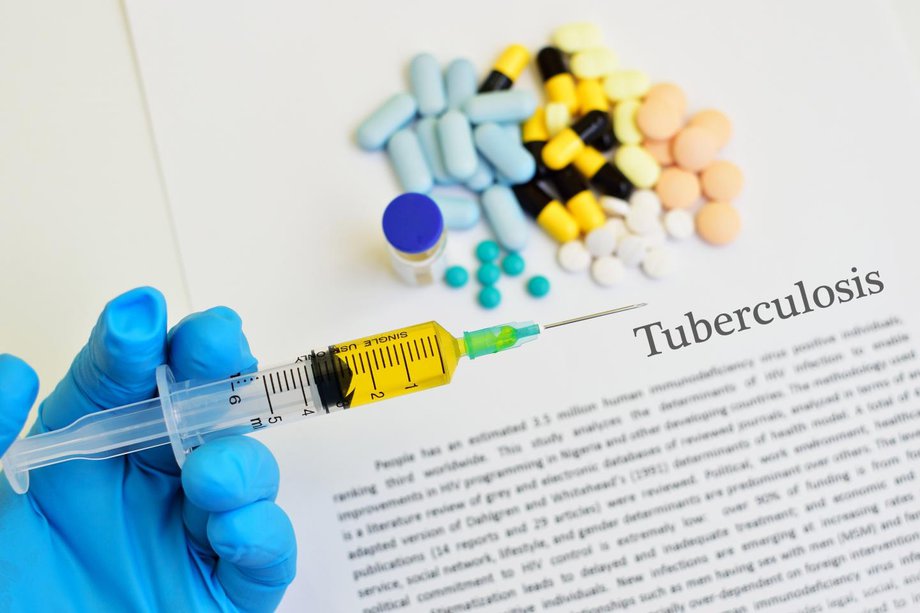What Is The Function Of Antitubercular Drugs In Tuberculosis Treatment?

Tuberculosis (TB) is a highly contagious infectious disease caused by the Mycobacterium tuberculosis bacteria. It primarily affects the lungs but can also target other organs in the body. TB remains a major global health concern, with millions of new cases and deaths reported each year.
In the fight against TB, antitubercular drugs play a crucial role in treatment. These medications aim to eradicate the bacteria, prevent disease progression, and minimize transmission to others. This article examines the function of antitubercular drugs in tuberculosis treatment, focusing on both first-line and second-line medications.
Additionally, the article explores the importance of combination therapy and drug regimens, potential side effects and adverse reactions, as well as the emergence of drug resistance and the need for new treatment options. Understanding the function and effectiveness of antitubercular drugs is essential for improving TB treatment outcomes and working towards the eradication of this global health burden.
Key Takeaways
- Antitubercular drugs are essential in the treatment of tuberculosis, especially in cases of drug-resistant TB.
- Drug resistance in TB is caused by various mechanisms such as target site mutations, activation of alternative pathways, overexpression of efflux pumps, biofilm formation, and intracellular persistence.
- Novel treatments for drug-resistant TB are being developed, focusing on understanding the mechanisms and developing drugs with novel mechanisms of action.
- Global initiatives and collaborative efforts are crucial in addressing the challenges in TB treatment, including improving access to diagnostics, medications, and healthcare services, as well as combating stigma and discrimination.
Understanding Tuberculosis: Causes and Symptoms
Tuberculosis is a highly infectious disease caused by the bacterium Mycobacterium tuberculosis, which primarily affects the lungs and can lead to symptoms such as persistent cough, chest pain, and coughing up blood.
It is primarily transmitted through the inhalation of respiratory droplets from an infected individual. The bacteria can remain dormant in the body for years before becoming active and causing disease.
Factors such as a weakened immune system, malnutrition, and overcrowded living conditions increase the risk of developing tuberculosis. Although the lungs are the most commonly affected organs, tuberculosis can also affect other parts of the body, such as the kidneys, spine, and brain.
Early diagnosis and treatment are crucial in order to prevent the spread of the disease and reduce the risk of complications.
The Importance of Antitubercular Drugs in TB Treatment
The efficacy of these pharmaceutical agents is instrumental in managing and combating the infectious disease caused by Mycobacterium tuberculosis. Antitubercular drugs play a crucial role in the treatment of tuberculosis (TB) and are essential in achieving successful outcomes. These drugs are specifically designed to target the mycobacteria responsible for TB and are effective in reducing the bacterial load, preventing the spread of the disease, and promoting the resolution of symptoms. The importance of antitubercular drugs lies in their ability to shorten the duration of treatment, prevent drug resistance, and minimize the risk of relapse. These drugs work by inhibiting the growth and replication of mycobacteria, thereby aiding the immune system in eliminating the infection. Their effectiveness is well-documented, with a significant reduction in morbidity and mortality rates observed when these drugs are used in combination with other treatment modalities.
| Key Aspects | Description |
|---|---|
| Importance | Antitubercular drugs are crucial in managing and combating TB |
| Effectiveness | These drugs are effective in reducing bacterial load and preventing the spread of disease |
| Duration of treatment | Antitubercular drugs help shorten the duration of treatment |
| Drug resistance | They play a key role in preventing the development of drug resistance |
| Morbidity and mortality | Their use in combination with other treatments leads to reduced morbidity and mortality rates |
First-Line Antitubercular Drugs
One of the essential components in the management of tuberculosis (TB) is the utilization of first-line pharmaceutical agents. These drugs are crucial in combating the disease by targeting the Mycobacterium tuberculosis, the bacterium responsible for TB.
To fully grasp the importance of first-line antitubercular drugs, it is vital to understand their mechanisms of action and their role in combating drug resistance.
First-line antitubercular drugs work by inhibiting the growth and replication of Mycobacterium tuberculosis. They target specific components of the bacteria, such as the cell wall synthesis, protein synthesis, and DNA replication. By disrupting these processes, the drugs effectively prevent the bacterium from multiplying and spreading throughout the body.
The significance of first-line drugs is further highlighted by the emergence of drug-resistant TB strains. First-line drug resistance occurs when the bacterium develops resistance to one or more of the commonly used antitubercular drugs. This poses a significant challenge in TB treatment, as it requires the use of second-line drugs, which are often less effective and associated with more adverse effects.
To summarize, first-line antitubercular drugs play a crucial role in the treatment of tuberculosis. Their mechanisms of action directly target the bacterium, preventing its growth and replication. However, the increasing prevalence of drug resistance highlights the need for further research and development of new treatment strategies.
- First-line drugs are essential for managing tuberculosis.
- They inhibit the growth and replication of Mycobacterium tuberculosis.
- Drug resistance is a growing concern in TB treatment.
- New treatment strategies are needed to combat drug-resistant strains.
Second-Line Antitubercular Drugs
Second-line medications are alternative options used in cases of drug-resistant strains.
These drugs are reserved for patients who have developed resistance to first-line antitubercular drugs or have experienced treatment failure.
Second-line antitubercular drugs are typically more toxic, less effective, and more expensive than their first-line counterparts.
They are used as a last resort when other treatment options have failed.
However, despite their limitations, second-line drugs play a crucial role in the management of drug-resistant tuberculosis.
Studies have shown that the use of second-line medications can lead to improved treatment outcomes, including higher rates of sputum culture conversion and increased chances of successful treatment completion.
These drugs are an essential component of comprehensive tuberculosis control programs, particularly in regions where drug resistance is prevalent.
Combination Therapy and Drug Regimens
Combination therapy and drug regimens are essential for the effective management of drug-resistant strains of tuberculosis.
Tuberculosis is notorious for its ability to develop resistance to antitubercular drugs, making it crucial to use multiple drugs concurrently to combat the disease effectively.
Combination therapy involves the use of two or more antitubercular drugs with different mechanisms of action, which helps prevent the development of drug resistance and increases treatment effectiveness.
By targeting different aspects of the tuberculosis bacterium, combination therapy ensures that no single mutation can confer resistance to all drugs simultaneously, reducing the likelihood of treatment failure.
Furthermore, combination therapy offers synergistic effects, where the combined drugs work together to enhance their individual efficacy.
This approach is particularly important in the case of drug-resistant tuberculosis, as it improves treatment outcomes and reduces the chances of further drug resistance development.
Potential Side Effects and Adverse Reactions
Potential Side Effects and Adverse Reactions:
Certain medications used in the management of drug-resistant strains of tuberculosis may be associated with notable side effects and adverse reactions. These potential complications should be carefully considered before initiating treatment.
One of the most common side effects of antitubercular drugs is hepatotoxicity, which refers to liver damage caused by the medications. Patients receiving these drugs need to be monitored closely for signs of liver dysfunction, such as jaundice or elevated liver enzymes.
Other potential side effects include gastrointestinal disturbances, such as nausea, vomiting, and diarrhea.
Additionally, antitubercular drugs can interact with other medications, leading to drug interactions. This highlights the importance of a thorough medication review and close monitoring for potential interactions when prescribing antitubercular drugs.
Overall, healthcare providers should be vigilant in monitoring patients for potential side effects and adverse reactions to ensure safe and effective tuberculosis treatment.
Drug Resistance and the Need for New Treatment Options
Drug resistance is a significant challenge in the treatment of tuberculosis (TB). Despite the effectiveness of antitubercular drugs, the emergence of drug-resistant strains has hampered successful outcomes. This resistance can occur due to various mechanisms such as mutations in the target site of the drug or the activation of alternative pathways. Consequently, the need for new treatment options to combat drug-resistant TB is crucial. Researchers are actively exploring alternative treatments, including the development of new drugs and the repurposing of existing ones. These alternative treatments aim to overcome drug resistance and improve treatment outcomes. To illustrate the current landscape of drug resistance and alternative treatments in TB, the following table provides a concise overview:
| Drug Resistance Mechanisms | Example |
|---|---|
| Target Site Mutations | rifampicin resistance due to mutations in the RNA polymerase gene |
| Alternative Pathway Activation | isoniazid resistance due to activation of the KatG-independent pathway |
| Efflux Pump Overexpression | fluoroquinolone resistance due to increased expression of efflux pumps |
| Biofilm Formation | resistance to multiple drugs due to the protective barrier of biofilms |
| Intracellular Persistence | resistance to antibiotics due to the bacteria residing within host cells |
Understanding these mechanisms and developing novel treatments can help combat the growing problem of drug-resistant TB and improve patient outcomes.
The Future of Antitubercular Drug Development and TB Eradication Efforts
Promising advancements in research and ongoing global efforts are paving the way for the development of novel interventions and the ultimate eradication of tuberculosis. Despite the progress made in antitubercular drug development, challenges still persist.
The emergence of drug-resistant strains poses a significant obstacle in the treatment of tuberculosis. These strains have acquired genetic mutations that render conventional drugs ineffective, leading to treatment failure and increased mortality rates. To overcome this challenge, researchers are focusing on the development of new drugs with novel mechanisms of action.
Additionally, global initiatives such as the Global Fund to Fight AIDS, Tuberculosis and Malaria and the Stop TB Partnership are working towards improving access to diagnostics, medications, and healthcare services for tuberculosis patients. Collaborative efforts between researchers, healthcare providers, and policymakers are crucial in addressing drug development challenges and achieving the goal of eradicating tuberculosis.
Inadequate funding for research and development hampers progress towards finding effective antitubercular drugs.
Limited accessibility to diagnostic tools and medications in low-income countries exacerbates the burden of tuberculosis.
Stigma and discrimination associated with tuberculosis hinder early detection and treatment initiation.
Coordinated efforts between governments, non-profit organizations, and the private sector are essential to combat tuberculosis on a global scale.
Frequently Asked Questions
How is tuberculosis transmitted from one person to another?
Modes of transmission for tuberculosis include inhalation of respiratory droplets from an infected individual through coughing or sneezing. Prevention strategies include early diagnosis, prompt treatment, and implementing infection control measures such as proper ventilation and use of personal protective equipment.
Can antitubercular drugs completely cure tuberculosis?
Antitubercular drugs are an essential component of tuberculosis treatment. However, they cannot completely cure the disease due to the emergence of drug-resistant strains. Additionally, these drugs can cause side effects, which need to be carefully monitored.
Are antitubercular drugs effective against all strains of tuberculosis?
Antitubercular drugs are not effective against all strains of tuberculosis due to the emergence of drug resistance. Antitubercular drug resistance has a significant impact on the treatment of tuberculosis, making it more challenging to achieve a complete cure.
Are there any alternative treatments for tuberculosis besides antitubercular drugs?
Alternative therapies and natural remedies are not recommended as standalone treatments for tuberculosis. Antitubercular drugs are the standard treatment, as they have been proven effective in eliminating the bacteria that cause tuberculosis.
How long does it usually take for antitubercular drugs to start showing results in tuberculosis treatment?
The duration for antitubercular drugs to start showing effectiveness in tuberculosis treatment varies, but it typically takes several weeks to months. The effectiveness of these drugs depends on factors such as drug resistance and patient compliance.









